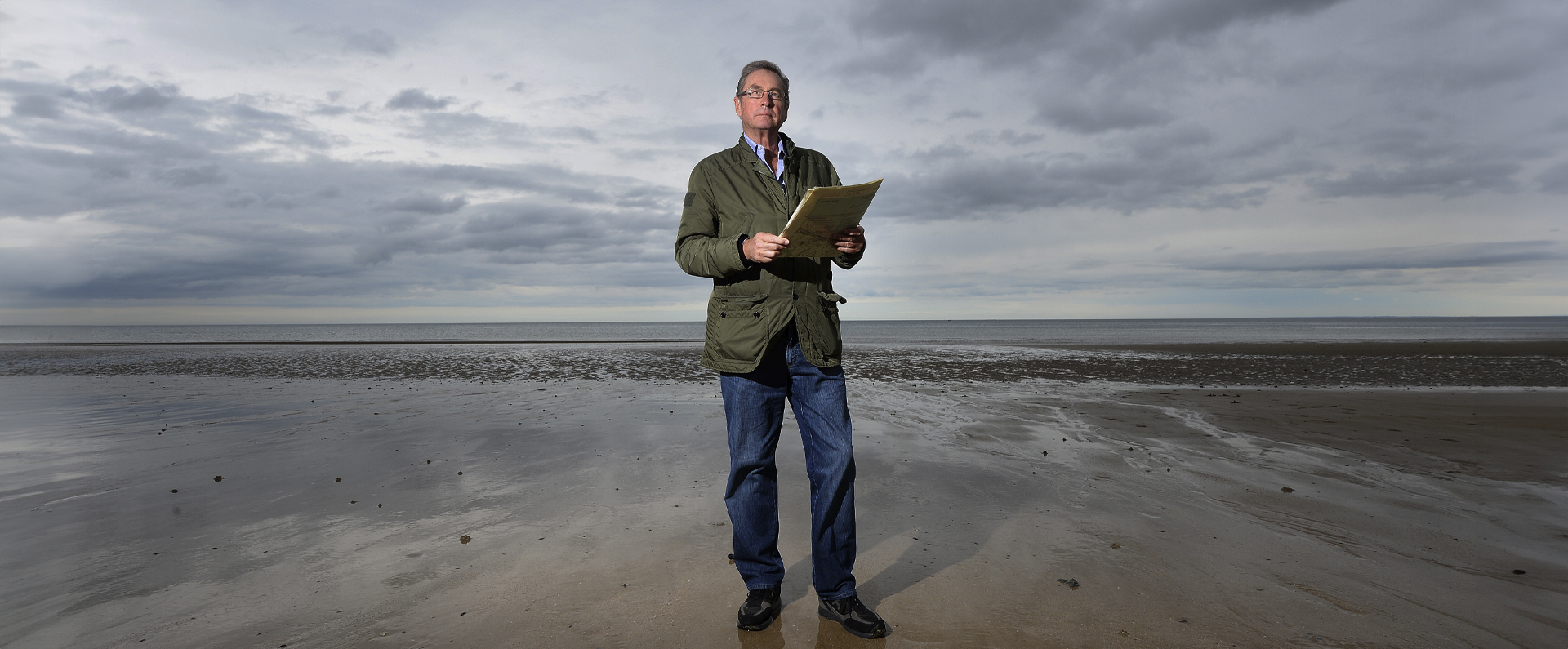
Published in Britain at War in May 2018.
Acting Lieutenant Colonel William Herbert Anderson VC: leadership
William Herbert Anderson was born in Glasgow, Scotland, on 29 December 1881. Always known as “Bertie”, he was the eldest of five sons born to William James Anderson, an accountant and stockbroker, and his wife, Nora (née Kay). However, one of the couple’s sons, Harry, had died, aged just seven days old, on March 7 1887.
The four surviving sons all enjoyed a privileged upbringing, sharing their time between two vast houses in Scotland. Their parents owned both a country pile, Strathairly in Upper Largo, Fife, and a rambling Georgian town house in Lansdowne Crescent, a prosperous area of western Glasgow.
Bertie Anderson was educated at the Glasgow Academy, Fettes College in Edinburgh and the University of Tours in France. He joined the 1st Lanark Rifle Volunteers on 20 December 1902, just five days before Christmas Day and only nine days before his 21st birthday.
Commissioned as a second lieutenant, he served in the Army for nearly eight years before leaving to join his father’s firm of Messrs Kerr, Anderson and Macleod as a partner. In July 1909, he got married in Alexandria, Dumbartonshire, to Gertrude (or “Gertie”) Campbell, and the couple went on to have two sons.
On 10 September 10 1914, just a month of the outbreak of the Great War, Anderson was recommissioned as a temporary captain, initially in the 17th Battalion, Highland Light Infantry (HLI).
Anderson served with distinction for most of the war, gaining several promotions. In March 1917, he was invalided home, but he returned to France as 2nd in Command of the 12th Battalion, the HLI.
On the evening of 25 March 1918, close to a sunken road rising from the Somme Valley, Acting Lt-Col William Herbert Anderson (by then Commanding Officer of the 12th Battalion) led his men the only way he knew how: from the front. It was his second counter-attack of the day: the first resulted in the capture of 12 machine-guns, 70 prisoners and restoring the line.
After four days of relentless fighting, as part of the German’s so-called Spring Offensive, Anderson steeled himself for another offensive, unaware that he was entering the final hour of his life.
At around 5pm on March 25 1918, at Bois Favières, northern France, the officer rallied his depleted force in order to drive the enemy from Maricourt Wood and its neighbouring timber yard.
The Germans were initially so surprised by the ferocity of the attack that they fell back some 1,000 yards to a slope that provided them some protection from the onslaught.
When the advancing British force came to a railway line, they briefly took shelter from heavy machine-gun fire before pressing forward once more. At around 6pm, as he advanced ahead of his men with his revolver in one hand and his swagger stick in the other, Lt-Col Anderson fell to the ground, mortally wounded by enemy fire.
His posthumous VC was announced on 3 May 1918 when his citation concluded: “He led the attack in person and throughout showed the utmost disregard for his own safety. The counter-attack drove the enemy from his position, but resulted in this very gallant officer losing his life. He died fighting within the enemy’s lines, setting a magnificent example to all who were privileged to serve under him.”
General Ferdinand Foch, the French military commander, later singled out Anderson for praise when he addressed Scottish troops: “Such men can never die. He lives today in your hearts and in the hearts of all men who revere heroism, and his name will prove an inspiration to all who fight the battle of liberty against the Boche.”
Anderson, the only one the four brothers to have married, left a widow and two sons, then aged six and four. His widow received his award at an investiture in Leeds, Yorkshire, on 31 May 1918.
In fact, Bertie Anderson was William and Nora Anderson’s fourth and final son to die in the Great War. For the Anderson brothers were a real-life, four-strong “Band of Brothers” who each gave their life for their king, their country, their comrades and for wider freedoms.
Captain Charlie Anderson, also of the HLI, had been killed in action on 19 December 1914 during fierce fighting in northern France. He was 26. 2nd Lieutenant Ronnie Anderson, also of the HLI, had been killed in action on the Western Front on 8 October 1915. He was 31.
Teddie, the youngest boy, who had transferred from the HLI to the Royal Flying Corps (RFC), had died on 16 March 1918 from the multiple wounds that he had received the previous day when crashing during a test flight over Hampshire. He was 21.
Mr and Mrs Anderson Snr were, of course, utterly heartbroken to have lost all their children. To make matters even worse, the body or remains of only one of their sons was returned to Scotland.
There is a bronze plaque in the nave at Glasgow Cathedral that was unveiled on January 22 1920 in a ceremony attended by their parents. It says that it is “to the memory of four brothers, natives of this city, who died for their country and in the cause of honour and freedom.”
William Anderson Snr died in January 1922, aged 70, two years after the plaque was unveiled. Nora Anderson died in 1939, aged 79.
Gertie Anderson, who never remarried after her husband Bertie’s death, died in 1967, aged 82. Her sons, Allan and Charlie, served during the Second World War and both survived the conflict.
I am immensely proud to be the custodian of Lt-Col Bertie Anderson’s gallantry and service medals, and that they are on display to the public at the Imperial War Museum.
Download a PDF of the original Britain at War article
For more information, visit:
LordAshcroftOnBravery.com


